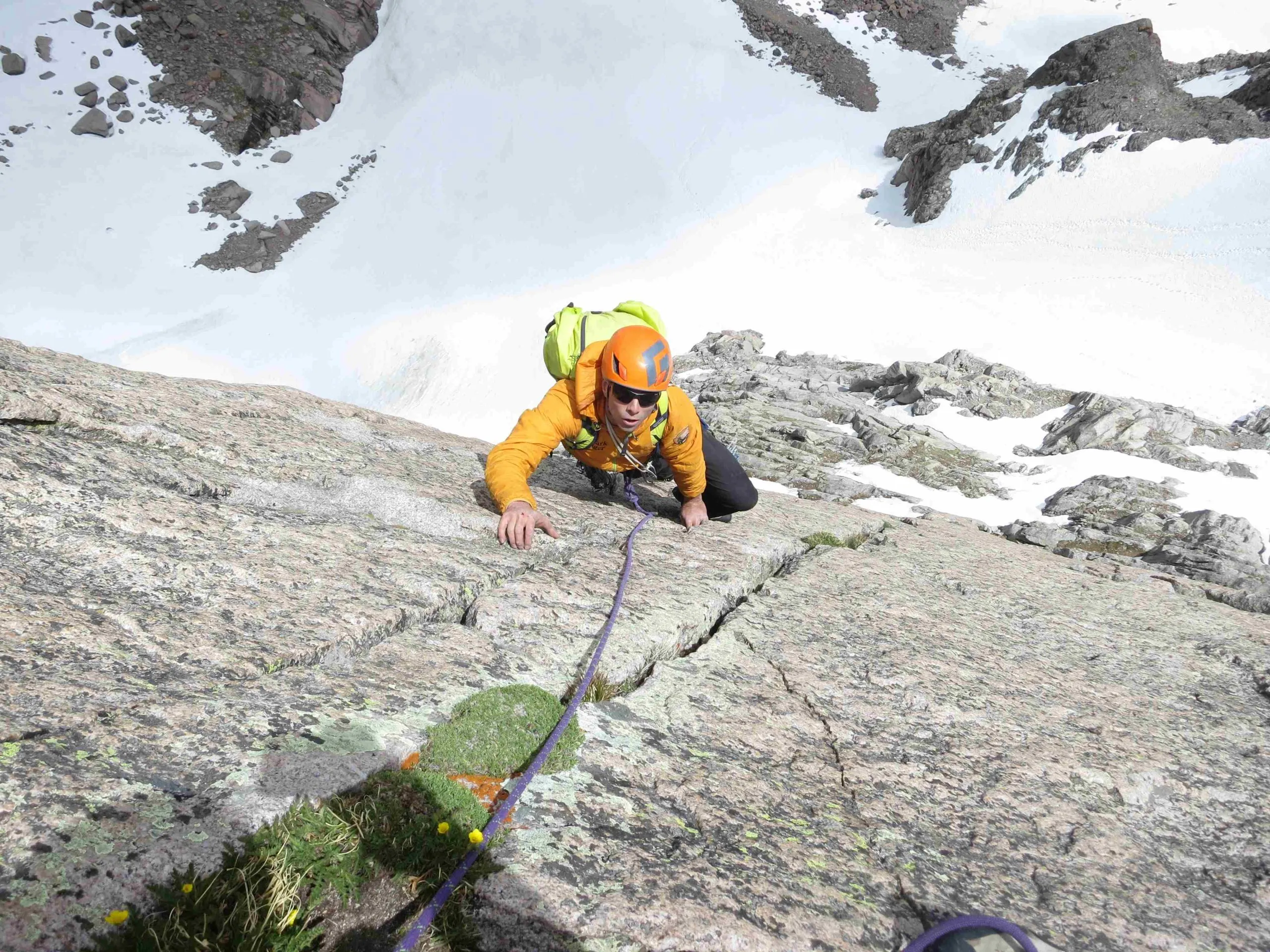Rocky Mountain National Park is a breathtaking expanse of towering peaks, alpine meadows, and pristine wilderness. This is a paradise for climbers of all levels. Beyond the physical challenge, Rocky Mountain National Park climbing immerses you in the raw beauty of the Colorado Rockies. Through the following article, nationalparkshops.com will bring you the most detailed guides to experience a safe mountain climbing trip.
Overview about Rock Climbing in Rocky Mountain National Park
Rocky Mountain National Park (RMNP) has a wide range of climbing routes, perfect for beginners and experienced climbers alike. From easy cragging to challenging alpine climbs, there’s something for everyone. The Casual Route and the South Face of the Petit Grepon are iconic climbs known for their steep rock and tough moves at high altitudes, making them prime spots for Rocky Mountain National Park climbing.
Colorado’s front range has a rich history in mountaineering, with major advancements in North American climbing taking place there from the late 1910s to the 1920s. Albert Ellingwood and Eleanor Davis were pioneers in belayed climbing, setting new standards with their ascents of Crestone Needle. The Stettner brothers, Joe and Paul, made waves with their daring climb of Stettner’s Ledges on Longs Peak, considered the hardest climb in the country at the time.
In Boulder, legendary climbers like Layton Kor and Pat Ament made significant technical progress during the golden age of American rock climbing in the early 1960s. Their routes remain popular and challenging, standing the test of time despite evolving standards and techniques, continuing to inspire Rocky Mountain National Park climbing enthusiasts.
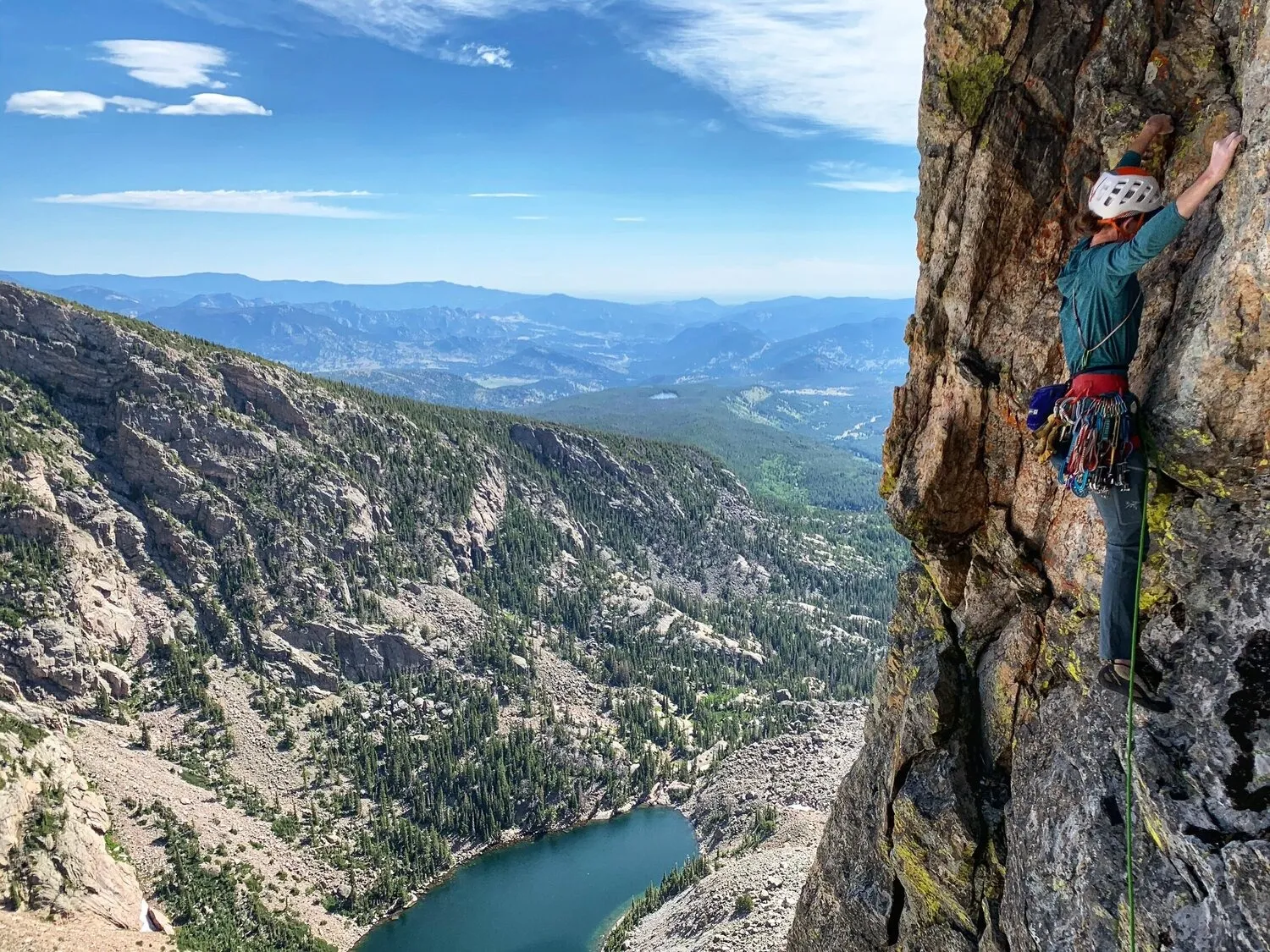
Guided Rocky Mountain National Park climbing
Today, climbers can explore a myriad of options in Rocky Mountain National Park. For those interested in front-country rock climbing, Lumpy Ridge offers an ideal spot just outside Estes Park. This area is renowned for its accessible yet challenging routes that attract climbers of all skill levels.
For those seeking classic alpine rock climbs, the high summits present a thrilling challenge. Climbers can tackle iconic peaks such as the Diamond on Longs Peak, Hallett Peak, the Spearhead, and the Petit Grepon. Each of these summits provides a unique experience, with breathtaking views and demanding ascents that test even the most seasoned climbers.
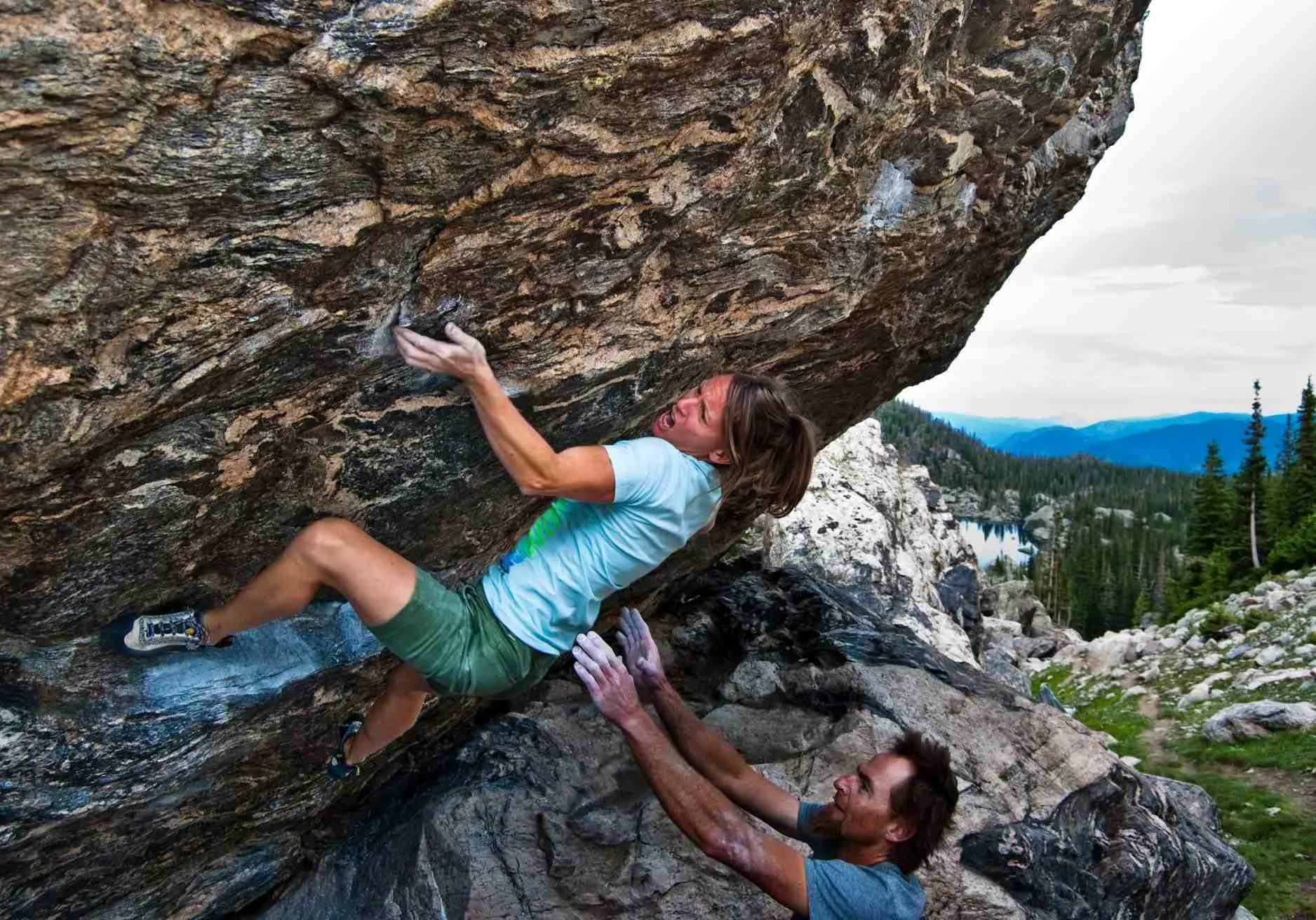
Winter transforms Rocky Mountain National Park into a haven for ice-climbing and mixed alpine climbs. Enthusiasts can find routes of all shapes and sizes, from beginner-friendly ice walls to complex mixed routes that require advanced technical skills. Winter ascents of Longs Peak and the park’s numerous thirteeners offer a rigorous yet rewarding adventure, with the added beauty of snow-covered landscapes.

What is the climbing season?
The climbing season in Rocky Mountain National Park typically spans from late spring to early fall, with the prime months being June through August when the weather is most favorable for Rocky Mountain National Park climbing. Various factors such as weather conditions, snow melt, daylight hours, and crowd levels can influence the climbing season.
During the summer months, the weather is generally stable with fewer storms and less precipitation, making it an ideal time for climbing. As spring progresses into early summer, snow and ice gradually melt, creating more climbing opportunities. The extended daylight hours in summer allow climbers to tackle more challenging routes with ample time.
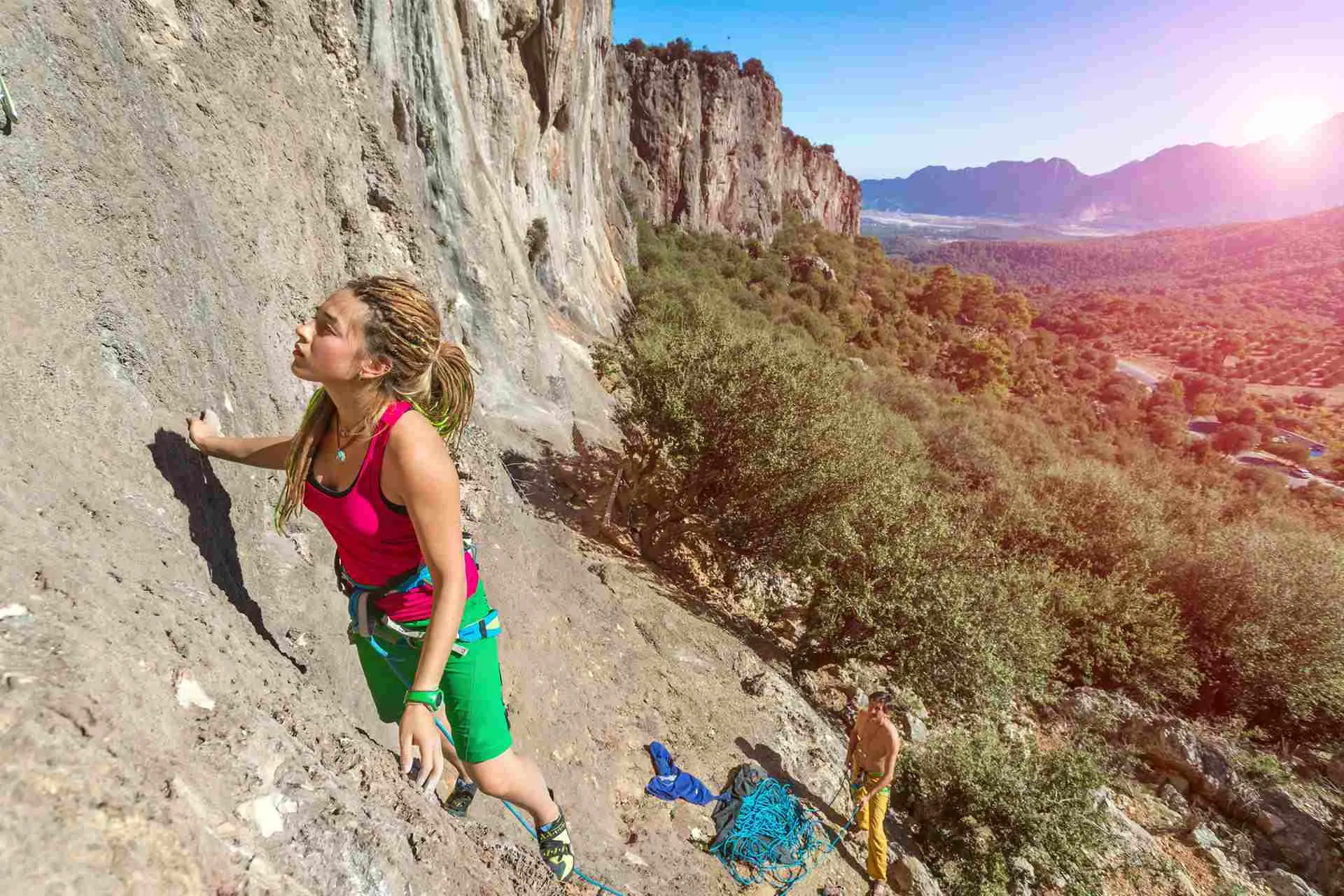
However, the peak summer season also brings more visitors, which can lead to increased competition for popular climbing spots and necessary permits. Despite this, the shoulder seasons of spring and fall present unique climbing experiences. In spring, climbers can access lower-elevation cliffs before the summer crowds arrive. Fall, while offering stunning scenery, comes with more unpredictable weather conditions, which can impact Rocky Mountain National Park climbing.
Regardless of the season, climbers should always check current conditions, secure the necessary permits, and be prepared for changing weather, especially during the shoulder seasons.

Detailed instructions for climbing in Rocky Mountain National Park
Climbing in Rocky Mountain National Park necessitates careful planning, thorough preparation, and strict adherence to safety protocols to ensure a successful and enjoyable adventure.
Begin by familiarizing yourself with the park’s climbing areas, routes, and their difficulty levels to select the most suitable option for your skill and experience. Certain climbing areas may require advance permits, so check the park’s regulations and apply for the necessary permits well in advance.
It’s crucial to monitor the weather forecasts and conditions for the park, as sudden changes can significantly impact the safety and feasibility of your Rocky Mountain National Park climbing.
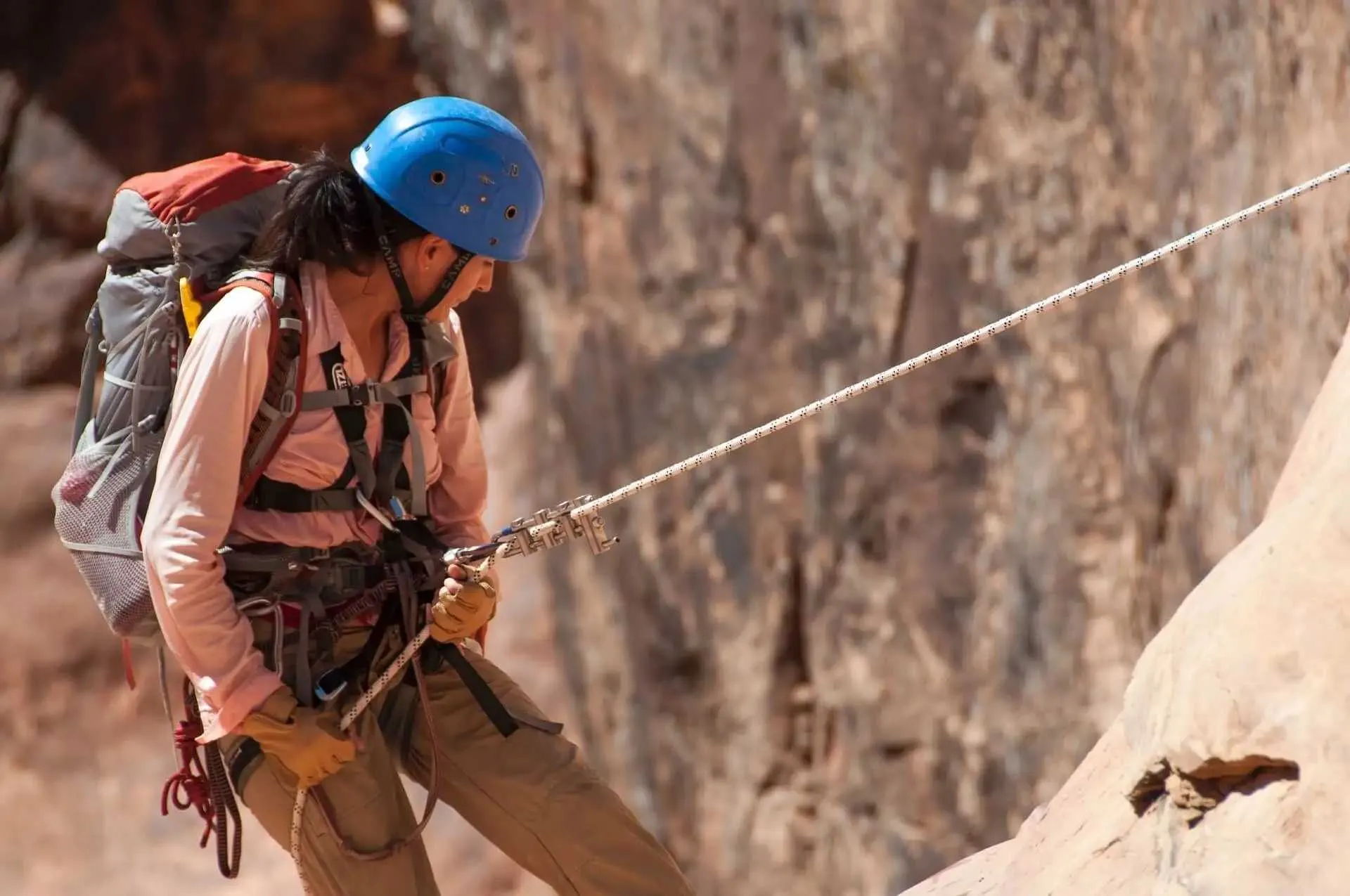
The next, honestly assess your climbing abilities and fitness level to choose a route that matches your skills and physical condition. If you’re tackling a more challenging route, consider training specifically for the demands of the climb, incorporating strength-building exercises and endurance training. Additionally, allow time for acclimatization to the high-altitude environment of Rocky Mountain National Park, as it can affect your body significantly.
Finally, adhere to the park’s safety protocols, such as using proper climbing techniques, maintaining communication with your team, and being prepared for emergencies. Respect the fragile ecosystem of the park by following Leave No Trace principles, like staying on designated trails and avoiding disturbance to wildlife.
Ensure you have the appropriate permits and comply with the park’s regulations regarding climbing and access to specific areas. For novice climbers or those tackling more challenging routes, hiring a professional guide can enhance your safety and overall climbing experience.

What do you bring when Rocky Mountain National Park climbs?
When embarking on a climbing adventure in Rocky Mountain National Park, it’s crucial to pack the right gear to ensure safety, comfort, and enjoyment throughout your journey. Start with essential climbing gear such as a well-fitted harness and a sturdy helmet to protect against falls and rock debris. Bring appropriate climbing ropes, including dynamic ones for lead climbing, and ensure you have a reliable belay device like an ATC or Grigri.
Include a selection of locking and non-locking carabiners, as well as quickdraws for securing ropes on routes. For traditional climbing, pack cams and nuts of various sizes to anchor into cracks and fissures securely. High-traction climbing shoes or approach shoes are indispensable for navigating the park’s rugged terrain. Don’t forget to bring chalk and a chalk bag to maintain a dry grip on holds during climbs.

In terms of clothing, prepare for variable mountain weather with moisture-wicking base layers to manage sweat, insulating layers for warmth at higher altitudes and rain gear to shield against rain or snow. Pack extra layers, including gloves and a sun hat, to stay comfortable in changing conditions.
Beyond climbing-specific gear, carry personal essentials such as sufficient food and hydration for the duration of your climb. Include a first-aid kit with essentials like bandages, antiseptic wipes, and blister treatment. Sun protection, including sunscreen and sunglasses, is vital due to the park’s high altitude and sun exposure.
Lastly, bring navigation tools such as a map, compass, or GPS device, and ensure your cell phone is fully charged for emergencies. By packing these essentials thoughtfully, you’ll be well-prepared for a safe and memorable climbing experience in Rocky Mountain National Park.

Conclusion
Rocky Mountain National Park offers a diverse array of challenges and breathtaking natural beauty. Through guided tours or self-guided exploration, climbers can immerse themselves in the raw grandeur of the Colorado Rockies, forging a deeper connection with the natural world and pushing the boundaries of their own physical and mental capabilities. With meticulous planning, the right equipment, and a spirit of exploration, climbers of all levels can embark on a transformative journey, connecting with Rocky Mountain’s natural wonders and the true essence of Rocky Mountain National Park climbing style life.
Read more:

